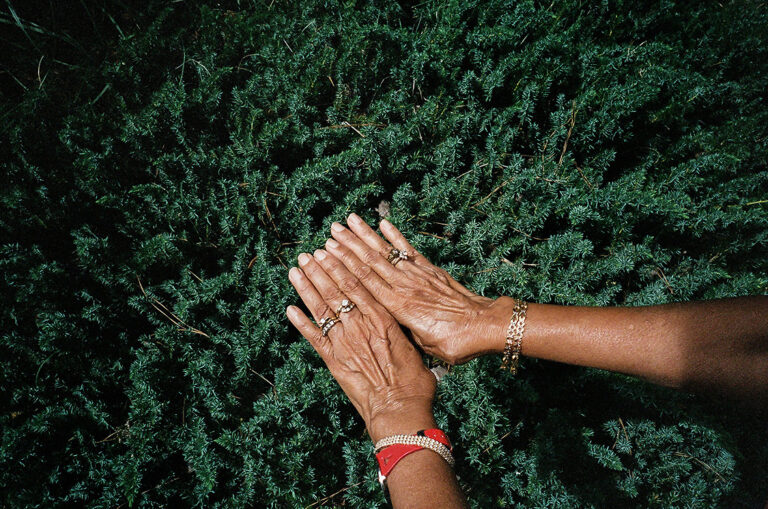Between last spring and this fall, a group of Art Academy B.F.A. students gained hands-on experience with curating a professional gallery exhibition from start to finish. The result is Deeply Rooted—a photo exhibition that’s now on view in Pearlman Gallery on our campus. The exhibition is presented in conjunction with the 2024 FotoFocus Biennial: backstories.
Associate Professor Emily Hanako Momohara, who is Interim Studio Arts Chair and Head of Photography at the Art Academy, guided students through the curatorial process with her course, Curating the Backstory.
“Students got learn about the process in a very accelerated timeframe. They researched, communicated with artists, selected artists from contracts, created programs, wrote the text for the catalog, and organized all of it. It’s a very accelerated version of what curators do,” Momohara explained in a gallery talk for Deeply Rooted.
Student curators for this exhibition include Noctis Bailey, Dominique Catron, Meg Elizabeth Evans, Jaila Felts, Kamaire R. Jones, Makayla Lane, Tammie Le H. M., Grace Macke, Leo Elliot Manis, Jaclyn Payne, Jordan E. Shuter, Gabrielle A. Price, and Cove Weyand.
Deeply Rooted highlights photographic work from acclaimed artists Vikesh Kapoor, Tomiko Jones, and André Ramos-Woodard. This curation tells multi-generational stories of traditions. The artists explore memory through cultural and familial experiences from different perspectives. Intergenerational aspects of intimate spaces, objects, and portraiture are showcased in vernacular, film, and digital photography.
Artistic Insights from the Curators
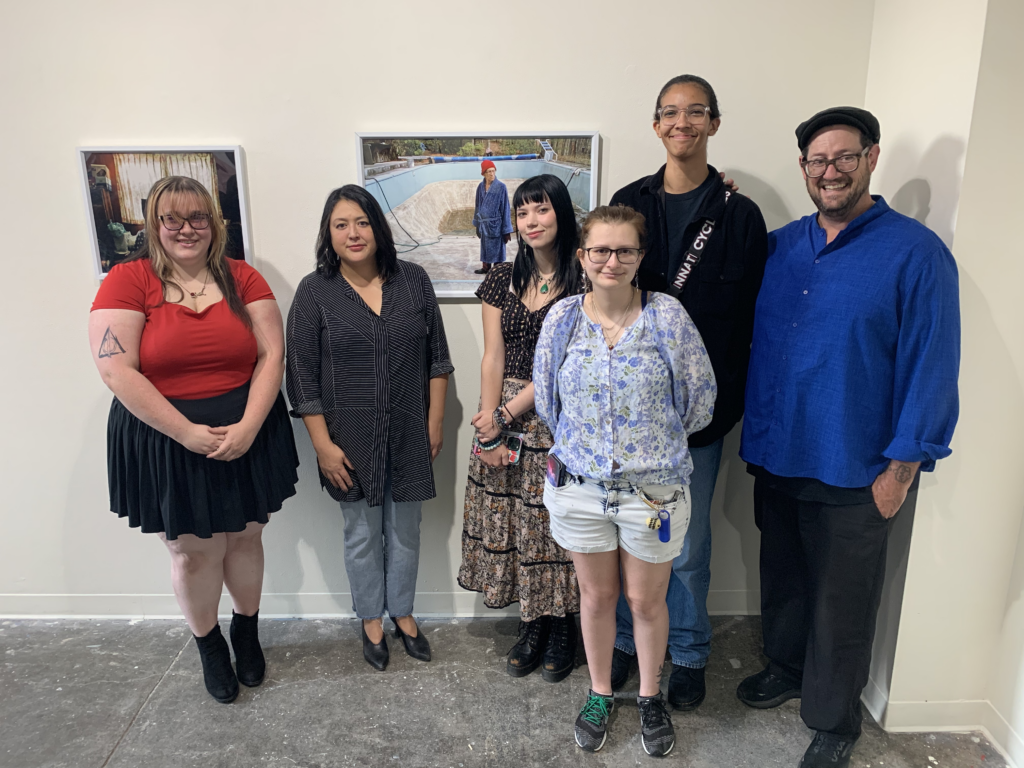
On Friday, Oct. 11, student curators Meg Elizabeth Evans, Jaclyn Payne, and Makayla Lane gave a gallery talk in which they revealed artistic insights and curatorial perspectives about the photography on view. A selection of their insights is presented below alongside the photos on which they focus.
Meg Elizabeth Evans
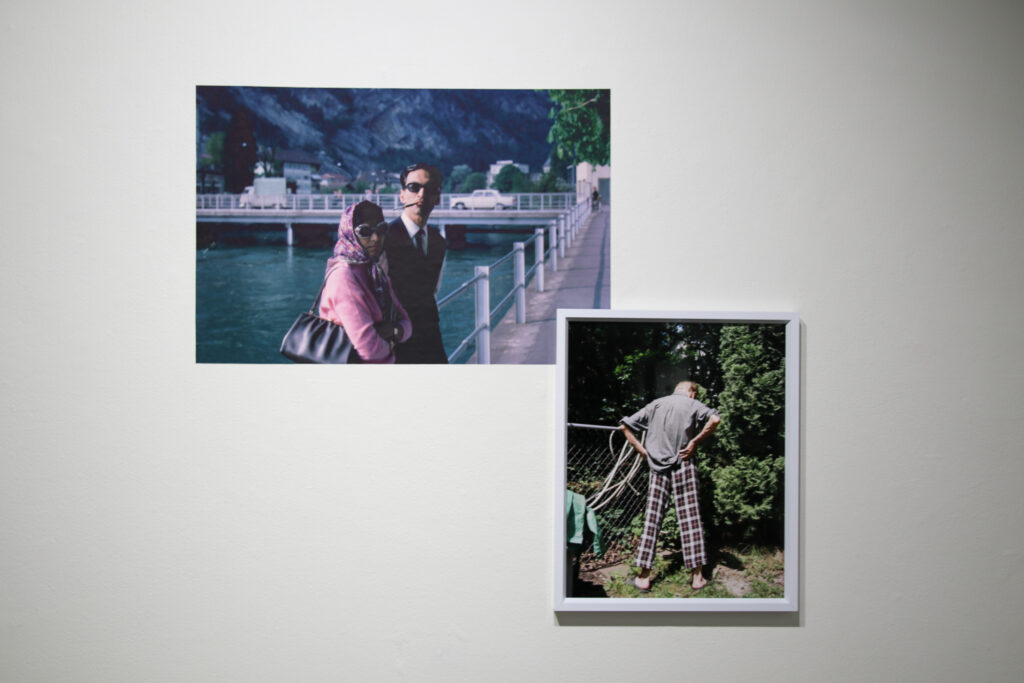
When we were given the prompt about backstories, we really started to understand it as multi-generational, family, and culture, and how that shapes us to be who we are. Here on this wall, we have two Vikesh Kapoor pieces: Before Immigration, 1969 and Last Summer, 2019. I think they really captured the passage of time with Vikesh’s family. This first one was taken before his parents immigrated. It was actually taken 50 years before Last Summer. And I think it causes me to ask myself, how much has changed in those 50 years?
Something really notable to me is how Vikesh’s father is dressed in these pieces. This first one, he’s wearing a suit, sunglasses. And the second one, he’s in his pajamas. He’s obviously much older, and it really makes me feel like he’s kind of settled down, at home.
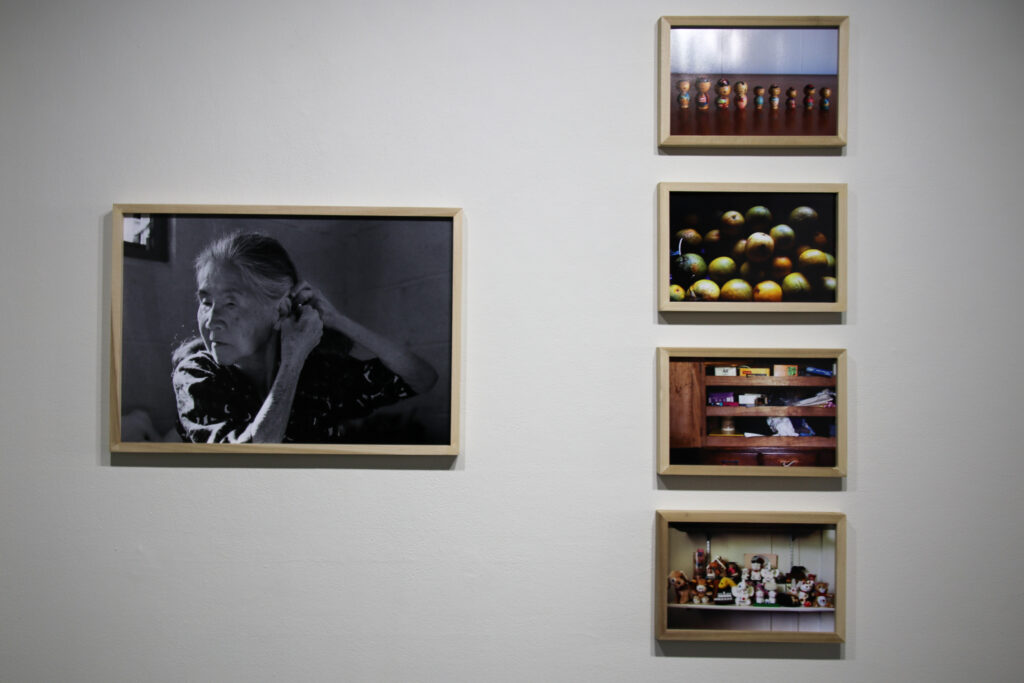
These pieces, they remind me a lot of going to my Filipino grandfather’s house when I was younger. I’ve noticed a lot of first-generation, older immigrants have a kind of similar aesthetic around their home. Between my grandfather and I, there’s a language barrier, and a lot of what I learned about him was through objects throughout his home. We bonded over the CD collection, old photographs, trinkets, and, of course, his candy stash. What is kept in these left spaces is so significant. When you grow up, you start to see these places in a different way.
Jaclyn Payne
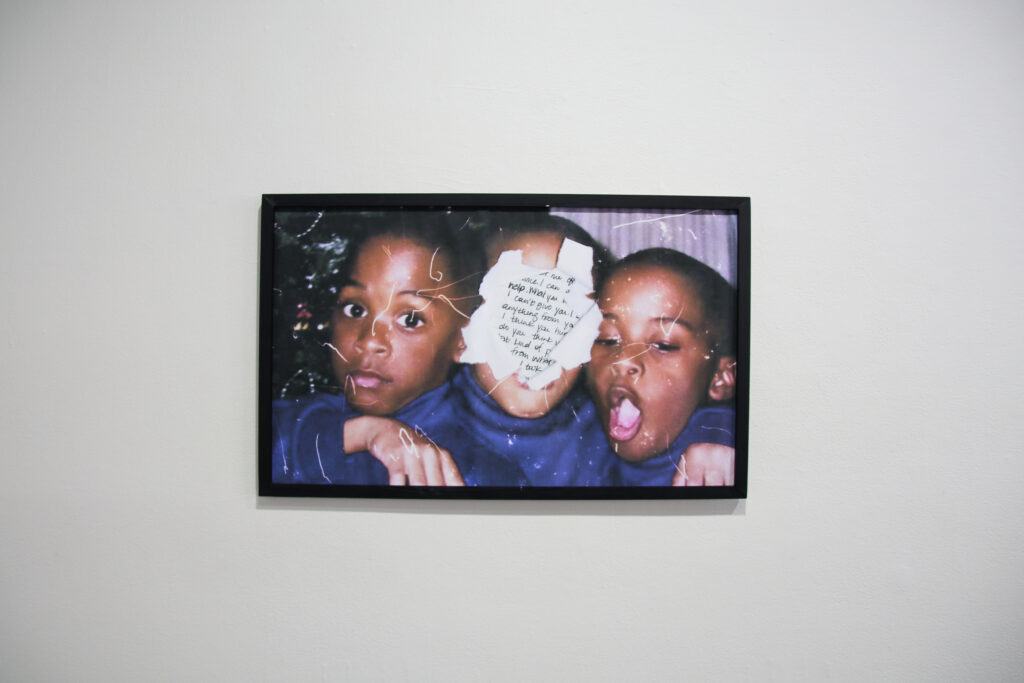
One of the concepts that we had in mind when curating the show was vernacular photography. It’s the celebration of what seems mundane. Our daily routine, the ordinary, the everyday life. It is the memorialization of the normalcy of capturing our daily lives and the normalcy behind them. How vastly different or similar they are.
With André Ramos-Woodard, he redefines vernacular photography. He uses repurposed imagery from family albums and family archives along with painting, collage, and drawing effects to infuse these new meanings of life, of race, identity, and social perceptions as a young Black man in America. He provokes this critical examination and cultural perception of life and power dynamics as he invites the viewer to reconsider it from these stereotypes and biases that we have seen in history and in modern society.
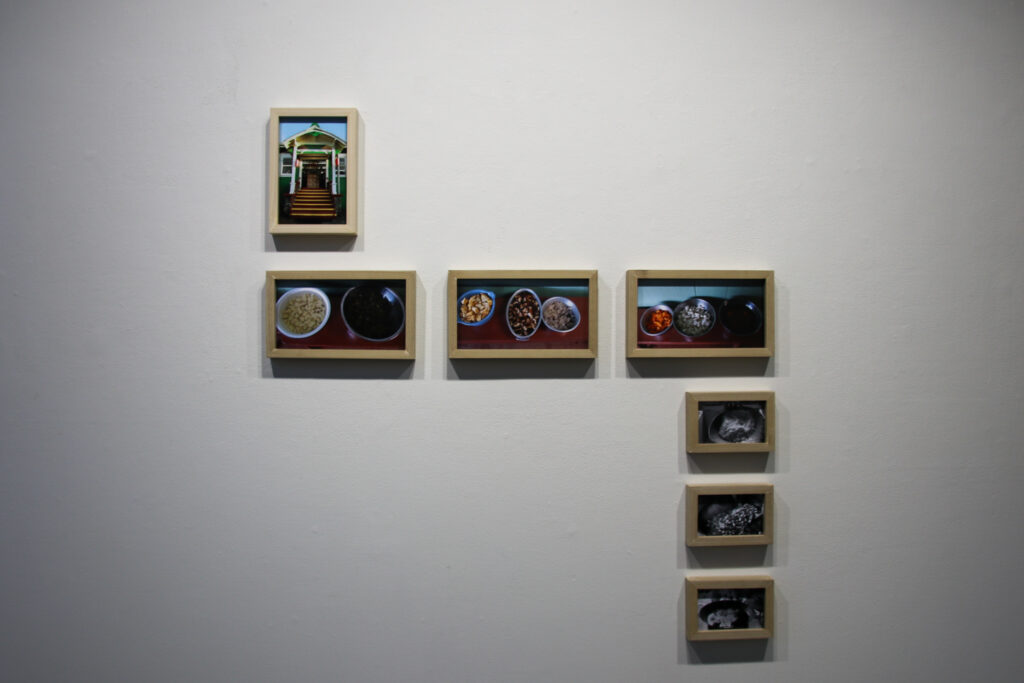
As we’ve been talking about identity, Tomiko Jones chose her series, Passage, to talk about her Japanese-American heritage and her grandmother’s house in Hawaii. Now, up in the top left, you can see a temple where the funeral service of her grandmother was held. And then these are depictions of the food that was served on the day that the service was held.
Now, we all have traditions that we, as families, specifically like to do. In mine, as a family member has passed, we come to the funeral service, we all grieve together. Then afterward we all gather and eat at someone else’s house, just to remind ourselves that even though the day is somber and everything, we still are together as a whole family. And like Tomiko, I also keep cherishing and remembering my grandmother by wearing her ring on my pinky finger. Just to remind myself that even though she is not physically with me right now, she is always right next to me in my heart.
Makayla Lane
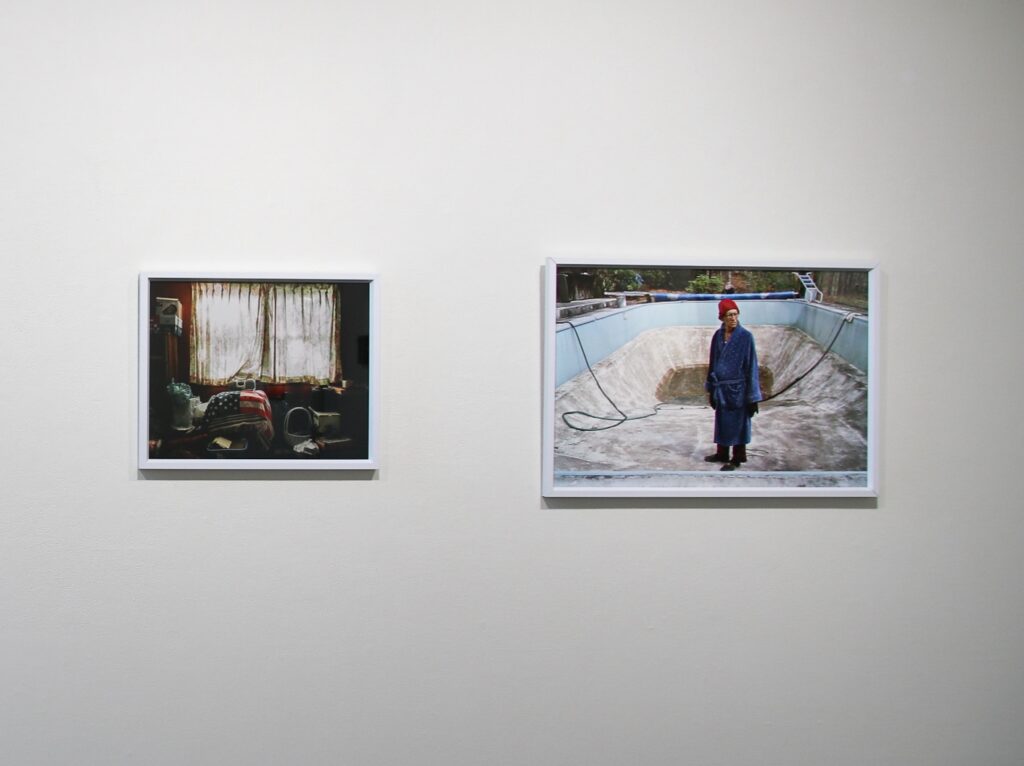
Looking at this space, there’s a large selection of items including this American flag. It’s a very dimly lit space. To me, this starts a lot of conversations of my own personal experiences in a middle-class American home. There always seems to be a space where items are collected that have a function but are no longer used so much for that function, so they’re kept more for memories and past function. Thinking about that, along with Vikesh’s parents’ background and their immigration to America, and their experiences as bicultural individuals.
When I look at this photo, titled Our Childhood Swimming Pool, his father’s expression doesn’t really give you a lot. You can’t really tell how he’s feeling. To me, that makes me question his experience in America. Having reached this kind of place in life that he’s dreamt of or achieved, and then looking forward, how does he feel now, where he’s at?
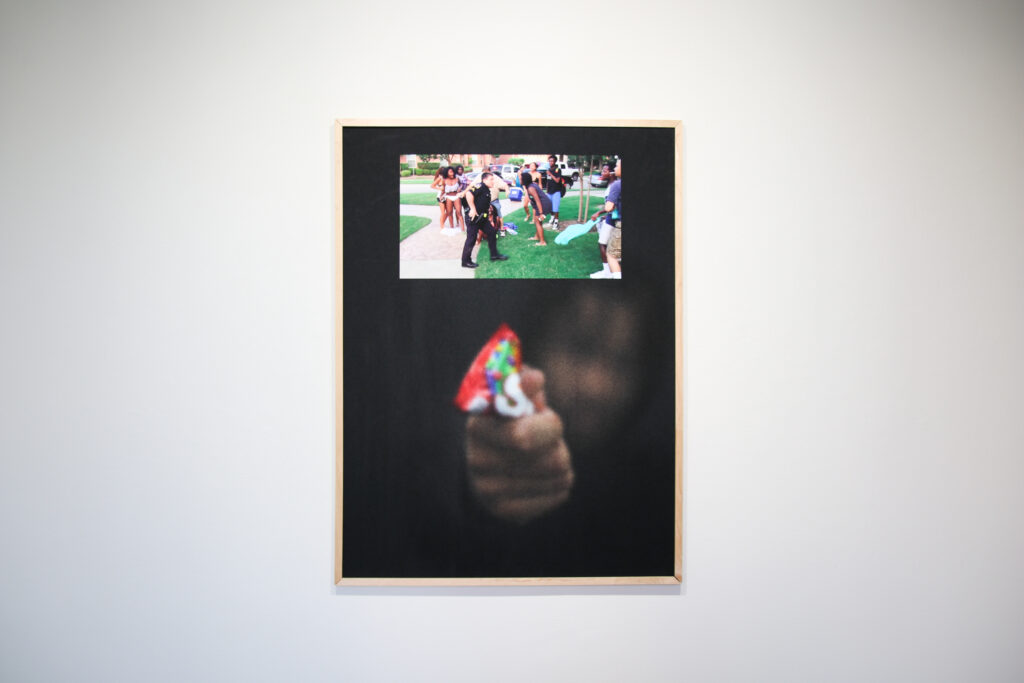
I think the last half of that title is really important—the gun that killed him, they sold it for so much, and the fact that our society was sort of complacent to that. Thinking about that and looking at these figures, both in the image at the top and the exterior figure at the bottom, it makes me start to question my relationship with this society and what the American dream is for people.
About the Art Academy of Cincinnati-FotoFocus Partnership
The Art Academy has fostered a strong, ongoing partnership with FotoFocus since the lens-based arts organization hosted its first Biennial in 2012. Every two years, FotoFocus presents a month-long celebration of lens-based art at galleries, museums, schools, and nontraditional spaces throughout Cincinnati, Dayton, Columbus, and Northern Kentucky. It represents the largest lens-based exhibition series of its kind in the country. The Curating the Backstory course was supported and made possible by FotoFocus.
As a participating venue of the 2024 Biennial, the Art Academy is presenting six gallery exhibitions this year. These include:
- Deeply Rooted in Pearlman Gallery, on view until Oct. 25
- Contested Ground in McClure Gallery, on view until Oct. 25
- Student Reflections in Chidlaw Gallery, on view until Oct. 25
- Digressions in SITE1212, on view until Nov. 1
- Another First Impression in SITE1212, on view until Nov. 1
- Humphrey Gets His Flowers in SITE1212, on view until Nov. 1
Read more about our partnership with FotoFocus right here: “FotoFocus Brings Lens-Based Art to Cincinnati at the Art Academy of Cincinnati College of Art & Design”
Gallery Info
Our galleries are free and open to the public, and no registration is needed. Check-in at the security desk is required. View all upcoming exhibitions for the rest of the season.
Gallery Hours:
Monday – Friday: 9 a.m. to 9 p.m.
Saturday – Sunday: 9 a.m. to 5 p.m.
Location:
Art Academy of Cincinnati College of Art & Design
1212 Jackson St., Cincinnati, OH 45202
Traveling via the Connector streetcar? We’re right around the corner from station 7 in Over-the-Rhine!
